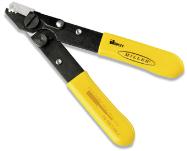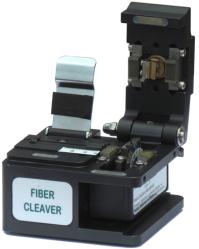-

- Sopto Home
-

- Special Topic
-

- Fiber Optics knowledge
-

- Tools for Stripping and Cleaving of Fibers
Fiber Optics knowledge
- Maintained Methods of Fusion Splicer Parts
- How to Use the Fiber Optic Cleaver?
- What are Fixed Attenuators & Variable Attenuators?
- Deployable Fiber Optic Systems for Harsh Mining Environments
- Developing Miniature Fiber Optic Cable Has Become the Trend
- Fiber Optic Cleaning Procedures
- 6 Steps to Selecting a Fiber Optic Cable
- Signal Attenuation Introduction
- How Fiber Transmission Works?
SOPTO Special Topic
Certificate



Guarantee
Except products belongs to Bargain Shop section, all products are warranted by SOPTO only to purchasers for resale or for use in business or original equipment manufacturer, against defects in workmanship or materials under normal use (consumables, normal tear and wear excluded) for one year after date of purchase from SOPTO, unless otherwise stated...
Return Policies
Defective products will be accepted for exchange, at our discretion, within 14 days from receipt. Buyer might be requested to return the defective products to SOPTO for verification or authorized service location, as SOPTO designated, shipping costs prepaid. .....
Applications
Fiber Optis can be used in so many fields:
Data Storage Equipment
Interconnects,Networking
Gigabit Ethernet
FTTx, HDTV,CATV
Aerospace & Avionics
Data Transfer Tests
Network Equipment
Broadcast Automotive
Electronics,Sensing
Oil & Gas, Imaging
Outside Plant,Central Office
Harsh Environment
Data Transmission
Illumination,Institutions
Ship to Shore,Education
Simulation,Military,Space
Unmanned Aerial Vehicles
Semiconductor Equipment
Diagnostics & Troubleshooting
Premise Networks Carrier Networks
Independent Telecommunication Providers
SOPTO Products
- Fiber Optic Transceiver Module
- High Speed Cable
- Fiber Optical Cable
- Fiber Optical Patch Cords
- Splitter CWDM DWDM
- PON Solution
- FTTH Box ODF Closure
- PCI-E Network Card
- Network Cables
- Fiber Optical Adapter
- Fiber Optical Attenuator
- Fiber Media Converter
- PDH Multiplexers
- Protocol Converter
- Digital Video Multiplexer
- Fiber Optical Tools
- Compatible
Performance Feature
Fiber Optics knowledge
Recommended


Tools for Stripping and Cleaving of Fibers
A common type of fiber stripper tool looks like a pincer. When starting with a fiber cable, one first has to cut into the polymer jacket with the stripper tool and pull the end part of the jacket away. The tool can then also be used to strip off the polymer buffer from the fiber over the last few centimeters. (Some strippers are specialized either for jacket removal or for stripping buffer coatings and smaller polymer coatings.)
The device is made such that it cuts into the jacket or the buffer coating, but without damaging the glass fiber inside. Careful handling is important in order to avoid damages to the fiber, which could later cause breaking. With an alcohol-soaked pad one can then remove any residues of the coating, which might later on cause problems.
The cleaving of fibers can often be done with quite simple mechanical fiber cleaver tools. In the simplest case, one only has a sharp diamond, carbide or ceramic blade (scribe) in a pencil-like form for scratching the fiber, and uses a finger kick to break it. Alternatively, one may put the fiber on a simple holder, hold it with two fingers, scratch it in between, and finally break it by applying some more tension. Such simple blades and holders are contained in simple fiber termination kits (preparation kits).


For cleaving with more controlled conditions, leading to more consistent results, there are special apparatuses, called mechanical precision fiber cleavers, which work as follows. Here, one inserts the stripped fiber and fixes it, typically with a V groove and two clamps. One then applies a tension, the magnitude of which can often be adjusted (e.g. with a screwdriver). One now lets a diamond blade approach the fiber, causing the required scratch. The blade may be made vibrating with a small electromagnet or piezo. Finally, the tension is increased such that the fiber breaks. Some semi-automatic fiber cleavers also allow for angle cleaving, i.e., for preparing fiber ends with some angle against the fiber axis.
With standard silica fibers, stripping and cleaving is usually no problem. There are problematic cases, however, e.g. for non-standard fiber diameters, photonic crystal fibers with large air filling fraction, or for fragile fluoride fibers.
For more information, please browse our website or contact a Sopto representative by calling 86-755-36946668, or by sending an email to info@sopto.com.





-180x180.JPG)
